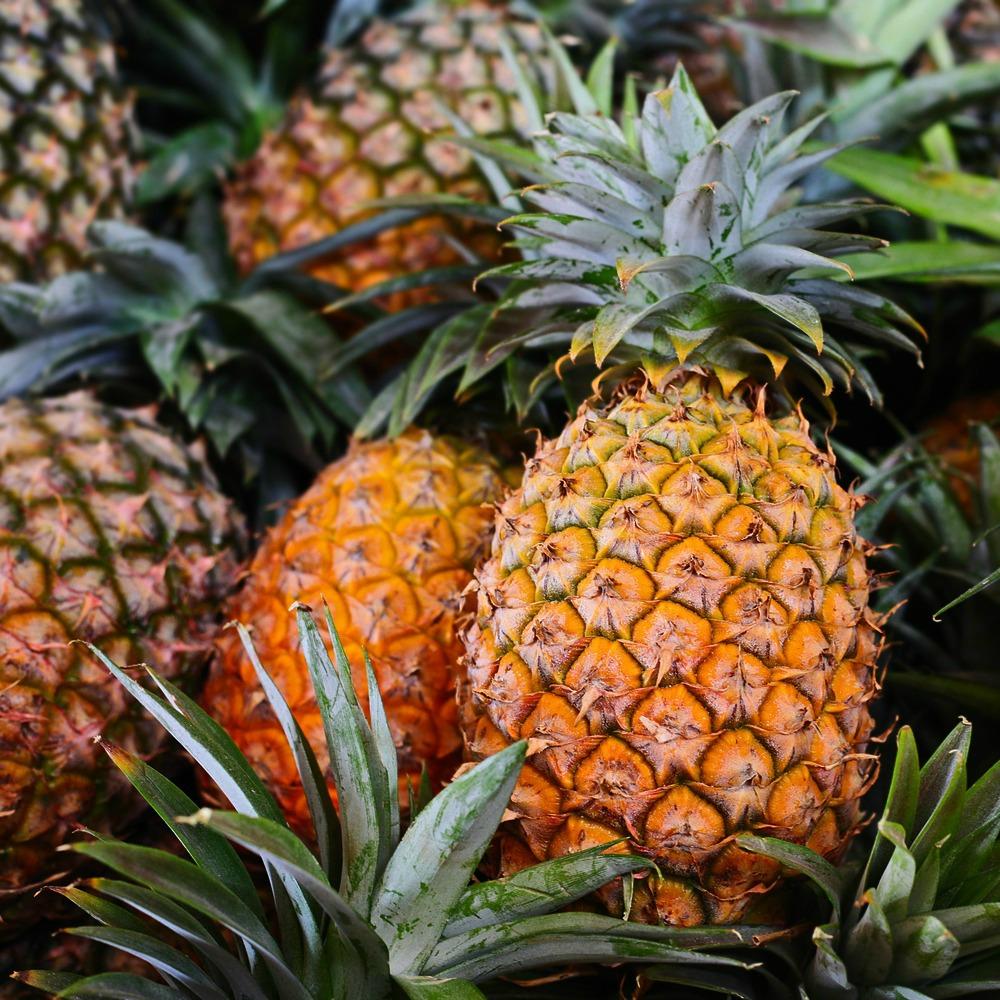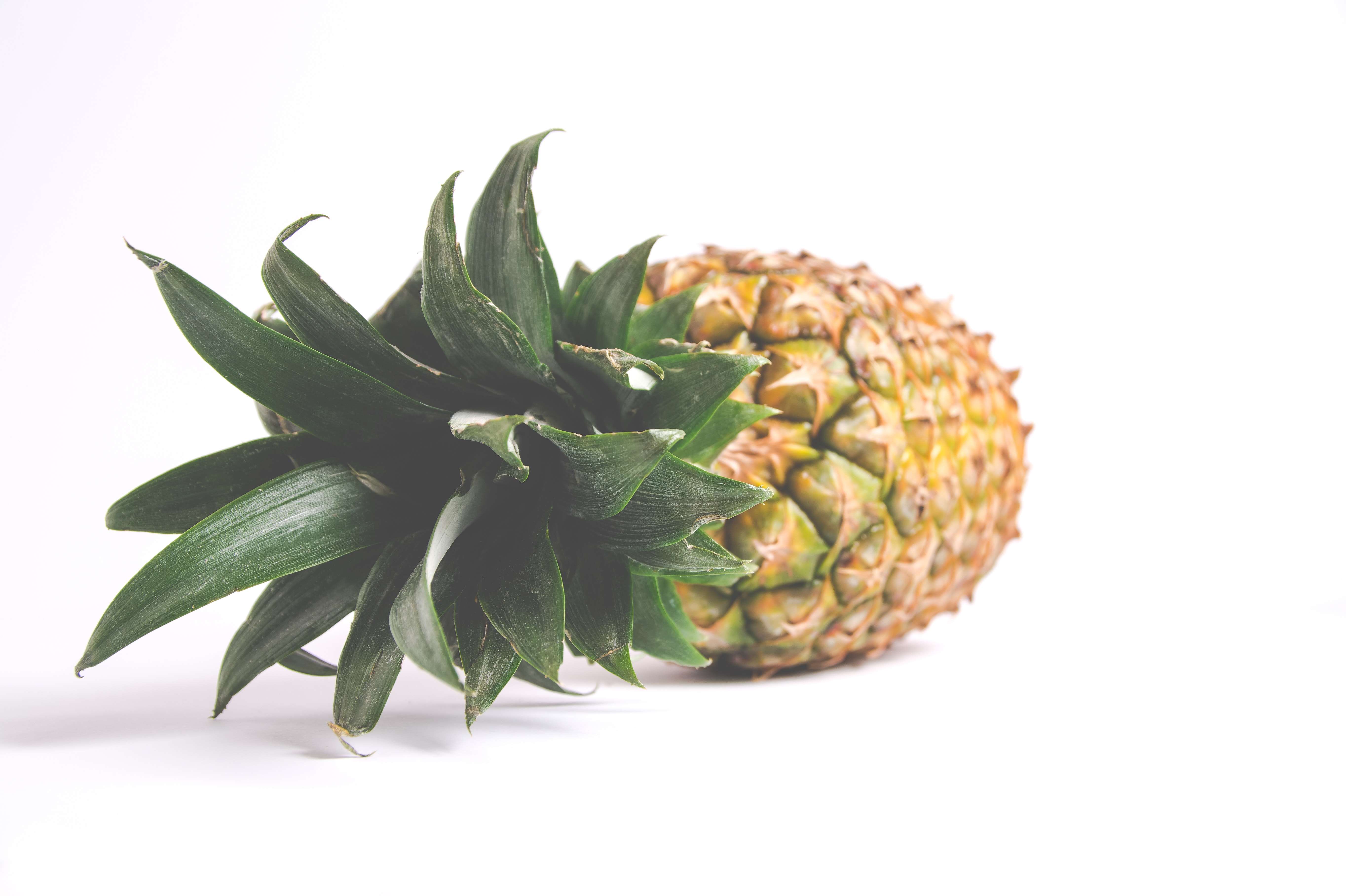There are a few easy ways to spot a good one when you’re trying to pick out a ripe pineapple to take home. The difference in taste definitely makes it worth knowing what a ripe pineapple looks like.
For most people not living in tropical climates, it’s a true challenge trying to find a fresh pineapple and to tell when a pineapple is ripe to eat. There is little that compares to a delicious ripe pineapple when it’s eaten in the proper picking season, especially where climates are suitable for good growth.
The challenge comes from the fact that pineapples are usually ripe right as they are harvested. A fully ripe pineapple means the fruit is at its highest sugar content. The longer it’s been since harvest, and the further the pineapple has had to travel to reach you, the less ripe the pineapple will be.
You will almost never need to ripen a pineapple after buying one because it will reach you in a state ready to eat, and probably a little older than that.
Even an imported pineapple two, or three, days old can taste a lot less fresh, less flavorsome, than a pineapple freshly picked from a pineapple farm. Pineapple is shipped from tropical sources and delivered all around the world, and the least amount of time between harvest and delivery can mean a few days before a pineapple finds its way to market. Being shipped by air is always going to be the fastest way, but we also need to think about sustainable sourcing and carbon footprint.
For those living in North America, most pineapples will be grown and shipped by Dole and Del Monte, who each deliver to one side of the US. Del Monte sends their Hawaiian pineapples to supply everywhere west of Chicago, while Dole ship their Hawaiian and Honduran pineapples supply everywhere east of Colorado.
The transport journey for buying a ripe pineapple if you live in Europe is going to be a lot longer. Almost 75% of Europe’s pineapples are grown first in Costa Rica. Most pineapples are transported by sea in specially designed and climate controlled freight ships. The sea journeys of those brave pineapples can take up to 14 days to reach Europe from Costa Rica. Almost all pineapples you get this way will be of the MD-2 variety, invented by Del Monte in the 80s which are now the most common type of pineapple grown and sold by manufacturers.
Luckily, if you live in Oceania like Australia or New Zealand, it’s much more likely you’ll be able to grab a fresh pineapple which is 2-3 days away from ripeness.
Site note – Some pineapples are intentionally picked early and sold as ‘green’ or ‘mature green’. It’s unlikely you’ll see one of these green pineapples unless you live in or near tropical areas.
How to tell when a pineapple is ripe
The two main things to look out for when picking a good pineapple are ripeness and degradation of the rind.
A ripe pineapple of the most common kinds (MD-2 and Smooth Cayenne) should have a bright yellowy-gold color across the skin.
The pineapple eyes around the base of the fruit should also be yellow.

Usually the end of the fruit at the base has the highest amount of sugar content, and is the ripest part of the pineapple. The more of the pineapple that is covered by the yellow color, the more you can assume will be fully ripe with the maximum flavor.
You can usually expect a ripe pineapple to also have a pleasant smell and subtle aroma of pineapple around the base.
The surface of the pineapple should be firm with a gentle ‘give’ to the touch.
What does a ripe pineapple look like? The signs are:
- A golden-yellowy skin starting at the base of the fruit
- A firm feel with a little ‘give’ to the touch
- A pleasant, sweet aroma of pineapple at the base
- Glossy, green crown
The signs of deteroration of the rind of the pineapple is often seen by a wrinkled texture, with the surface of the pineapple being overly soft. A pineapple going rotten can sometimes have the smell of fermentation, something that hints at a vinegar smell.
Other things you should try and avoid that tell an overripe pineapple are things like cracks, or leakage through the rind. A pineapple gone bad will often be overly dark green or a bronzed red color in certain parts. Leaves (though you don’t eat them, of course) should generally be green and bright.
Other factors to help you tell when a pineapple is ripe include well trimmed bottoms, and where the crown of the pineapple is a reasonable size – either ideally the height of the pineapple and not more than double its height. That indicates a good growing and maturation time for the fruit.
The larger your pineapple is, of course, the better. A larger specimen will often have a greater proportion of the edible fruit to eat.
Some urban myths to encourage the ripeness of a pineapple include ‘standing your pineapple upside down in the fridge’ with the theory that the juices from the base will more uniformly spread through the rest of the fruit. Try this yourself, if you wish, but it’s impossible to conclude on the ultimate benefit to the ripeness of pineapple.
How can you tell if a pineapple is bad?
Ideally, you should be purchasing your pineapple on the day you intend to eat it in order to avoid any degradation of the taste and experience.
To prolong use, it’s possible to cut the pineapple into rings (how to cut pineapples into rings is explained here in pineappleinfo’s guide) and store in an airtight container in your refrigerator.
What can you do to keep a pineapple fresh?
Before cutting a pineapple should be stored at 45 degrees. Remember to twist (not cut) the crown off, unless you want it for decorative purposes.
To keep a fresh pineapple ripe for as long as possible, it’s usually a good idea to store it properly.
After being cut, fresh pineapple should be kept refrigerated in the upper-top shelf and not too close to the sides of your fridge. This can cause it to lose color, and the pineapple to lose taste.



0 Comments